Let’s do a reality check! Go down memory lane and let us know what you remember the most – the last presentation you attended or the last story you heard? Well, we are pretty sure that you can quickly recall the last story you heard.
The human brain is hardwired to stories. As you listen to a story, your eyes dilate, you laugh, your heart races, you clap, you jump back, you lean forward, or you get a chill down your spine. Isn’t it? By incorporating the power of a story in your presentations, you can completely transform them. However, to enthrall the audience with your story, you must craft the tale considering “who are the audience when they enter in the auditorium/conference room and who do you want them to be when they leave the auditorium.”
The most important thing to understand here is – merely having a good story is not sufficient to make your presentation a great one. You need to structure the tale appropriately to get your message across in an impressive manner. In this blog post, we have provided you with a few impressive structures to organize your stories in your presentations. Give them a try and make your presentations memorable for the audience!
1. The Hero’s Journey or Monomyth
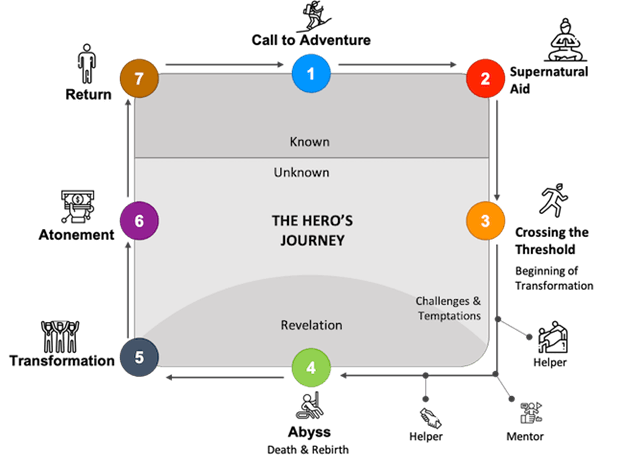
This style of storytelling is used in movies, religious writings, and folk tales. A hero is shown embarking on a difficult and adventurous journey of the unknown. He faces many obstacles on the way and overcomes them with bravery. Finally, he returns home with a reward or new wisdom. This structure infuses life into your message and makes it more relatable to the audience.
You can use this structure in your presentation and depict the audience as a ‘hero.’ You can further demonstrate what challenges they are facing while making efforts to gain a competitive advantage and how your solution/offering can help them overcome all the challenges and become a market leader.
Instances When You can Use this Structure:
- You want to win the trust and build credibility with a new audience.
- To demonstrate the success of your product/service by featuring an individual’s struggle before using the product and the accomplishments after using the product.
- To explain the benefits of risk-taking and evoke a sense of empathy in the audience.
- To portray how you gained new wisdom.
Example: Watch this TED talk of BLACK, the Japanese yo-yo-er. He beautifully shared how he found his life’s passion and how difficult it was for him to be a world champion. At the end of the presentation, he talked about his newfound skills.
2. Nested Loops
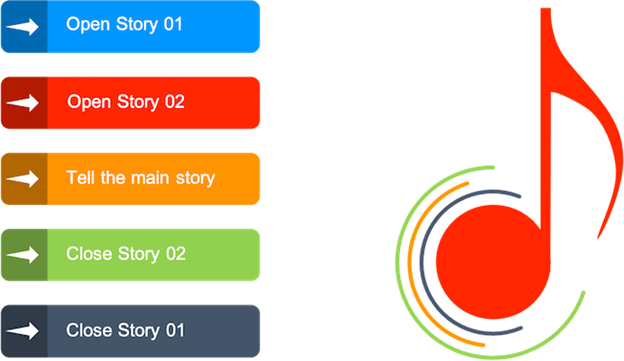
In this structure, three or more stories/narratives are layered within each other, with the core message or central idea placed in the middle. Each story finishes in the same order it was introduced, i.e., the first story you commence is the last story you end with, the second story you begin is the second to last story you end, etc. In a nutshell, all the loops are closed in the reverse order, i.e., begin the second story before ending the first, and so on.
You can understand the nested loop as: Your friend tells you a story that was told to him by a wise person (this story conveys an important message). It has two layers – the first is your friend’s own story, and the second one is the wise person’s story. And in between these two stories is the core message.
Instances When You can Use this Structure:
- You have a series of interactions/stories to illustrate how wisdom was passed to you.
- You want to explain the process of how you reached a conclusion.
Example: This structure was used by Chimamanda Ngozi Adichie, a Nigerian writer, in one of her speeches. She shared her experiences to support her arguments about how Africa is perceived in the western world.
3. Petal Structure
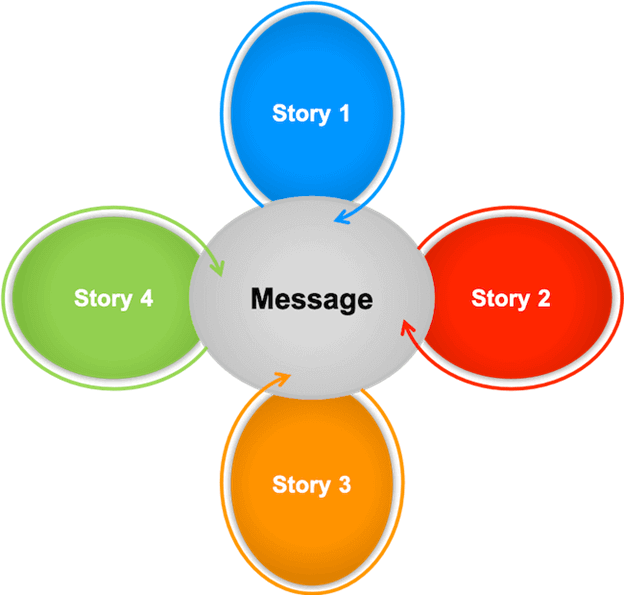
Think of a flower having several petals; all petals are separate but united to the center. Likewise, this structure of storytelling has multiple scenarios or viewpoints that relate back to one core idea or message. It is generally used when you need to convince the audience to take action or believe the presented information. Further, using this structure, you can create strong emotional appeal around the core idea or provide enough evidence around your main hypothesis/assumption.
In this technique, you have several speakers with their individual stories. Each speaker utters his own set of complete narratives, paving the path for the next speaker. In this way, all independent stories get connected, focussing on the same concept.
Instances When You can Use this Structure:
- You have multiple speakers to speak on different facets of the same subject.
- You have to make the audience understand the importance of your message through a series of stories.
Example: Watch the presentation by Simon Sinek in which he shared his ideas through a series of stories. Each story strengthened his message.
4. Converging Ideas
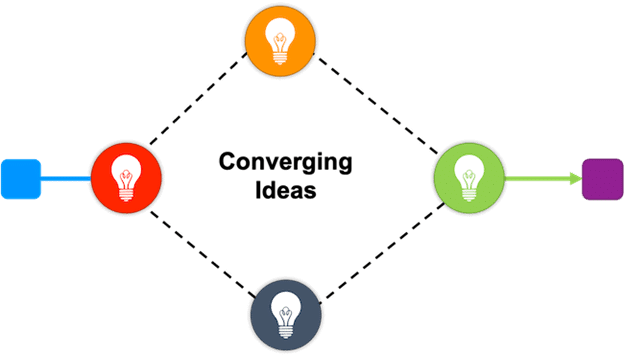
This story structure is somewhat similar to nested loops; however, instead of complementing one story with other stories, the converging ideas structure incorporates several equally important stories that end with a common strong conclusion. You can use this storytelling technique to make your audience understand how great minds or partnerships came together and resolved a challenge.
Instances When You can Use this Structure:
- To demonstrate the emergence of a product from scratch.
- To explain how several different thoughts culminated into a single idea.
- To explain how symbiotic relationships have developed.
Example:
Watch this video in which Black Label Movement and John Bohannon have explained how dancers and scientists collaborated to bring an interesting alternative to monotonous presentations.
5. In Medias Res
Image Source
In this type of structure, you start your presentation by providing a teaser or snippet of what is going to happen. It generates curiosity in the audience and helps grab their attention right from the beginning. To keep the audience interested and wanting to know what happens next, hint at something unusual or unexpected. Don’t provide too much information about a specific action, as you will want to furnish more details when you narrate it chronologically.
Instances When You can Use this Structure:
- To intrigue the audience right from the start and keep them craving for more.
- To draw the attention of the audience to the most pivotal and exciting moment of the story.
Example: The TED talk by Zak Ebrahim is the perfect example of this type of storytelling. He started his speech with the shocking revelation that his father helped plan the bombing of the 1993 World Trade Centre. Watch the video here!
6. Sparklines
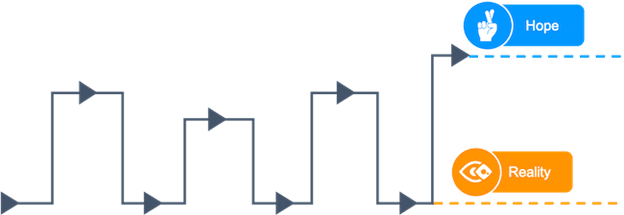
Image Source
Through this storytelling technique, the presenter intends to draw the audience’s attention towards the problems they face in their businesses, personal lives, and society. The presenter creates hope and excitement to encourage the audience to take action and embark on the journey of change. Testimonials and call-to-action are based on this technique.
You can visualize the future more appealing and exciting to the audience by switching your talk between ‘what is’ (reality) and ‘what could be’ (hope).
Instances When You can Use this Structure:
- If you want to create a following through your speech.
- To create an emotional appeal.
- To persuade the audience to take action.
Example: Martin Luther King’s speech – “I have a dream,” in which he portrays intolerance and a racism-free society, is the perfect example of this storytelling.
7. The Mountain
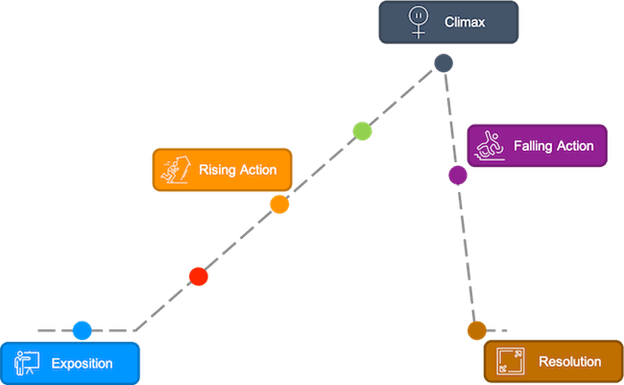
Image Source
You can’t walk straight up the mountain; you have to traverse various ascends and descends. Similarly, in this structure of storytelling, the presenter gradually builds tension while heading towards the climax. After reaching the peak of the climatic challenge, he relieves tension and ends the presentation.
This storytelling technique is similar to the Monomyth technique; the only difference is that it’s not necessary to have a happy ending in the Mountain.
Instances When You can Use this Structure:
- If you want to keep the audience curious by building suspense.
- To illustrate the ups and downs you faced while overcoming the challenges.
- To encourage the audience to take a desirable action by providing a satisfying conclusion.
Example: Aimee Mullins used this structure for narrating her personal story about how she became a famous model, actress, and athlete despite being born with fibula bones in her lower legs.
Some Quick Tips for Including Stories in Your Presentation
- Know the opinions, values, pain points, and topics of interest of the audience. It will help you frame an audience-centered story.
- Link your story to your call to action.
- The story must be relevant to the point you want to put forward or the idea you want to support.
- A fake and unauthentic story may backfire. So, be genuine and include real-time stories to win the trust of the audience.
- Use a conversational tone while narrating the story to make people feel what the journey of achieving goals looks like.
- Supplement your story with high-definition visuals, props, videos, etc., to evoke emotions and engage them.
- Your story must have action, contrast, or conflict. Also, there must be a problem/issue that the characters must overcome.
- Ensure that your story is crisp, short, and interesting.
Key Takeaway
Your information is like dots on a paper; you need to connect these dots through a story to make them meaningful and understandable. A great story syncs the storyteller’s brain with the audience’s neurons. So, you must choose the most appropriate storytelling technique to put forward your message in a powerful way and make it easier for the audience to follow the flow.
We have covered some storytelling techniques here. Try them in your next presentations, and let us know if they work wonders for you. Meanwhile, if you know any other technique, tell us in the “Comment” section below. And, do not forget to share the blog post on your social media channels!
Looking For Powerpoint Design Agency?
Call Pursho @ 0731-6725516
Telegram Group One Must Follow :
For Startups: https://t.me/daily_business_reads
#Ways #Organize #Presentations #Form #Stories





